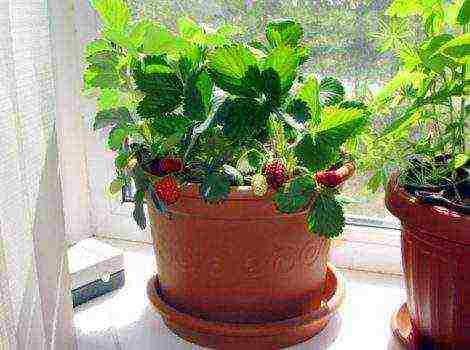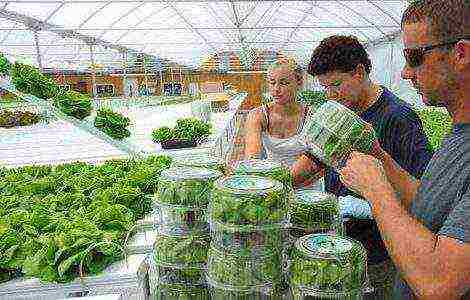Content
- 1 How to choose the right variety
- 2 Terms and region
- 3 Hybrid or variety
- 4 Color, size and shape
- 5 Description of popular greenhouse varieties
- 6 How to choose the right variety
- 7 Terms and region
- 8 Hybrid or variety
- 9 Color, size and shape
- 10 Description of popular greenhouse varieties
- 11 What are the benefits of growing peppers in a polycarbonate greenhouse?
- 12 The best varieties of peppers for a polycarbonate greenhouse
- 13 Features of caring for peppers grown in a polycarbonate greenhouse
Vegetable or sweet pepper is a high-yielding and healthy crop loved by many. Many summer residents prefer to grow pepper. But the yield is higher for those who cultivate pepper in the greenhouse. One of the important parameters when growing is the correct choice of seeds. For greenhouse peppers, you need to select seeds that are intended for planting in a greenhouse.
The best varieties of peppers for polycarbonate greenhouses
How to choose the right variety
There are several criteria for choosing a litter. When buying seeds in a store, your eyes run up from the abundance of bags with alluring pictures. The main thing here is not to get confused and ask the seller the right questions. You can even put together a cheat sheet for you to look into.
- Growing conditions. The size of your greenhouse. Acquire tall or undersized varieties.
- Ripening terms. Which variety do you prefer - early, middle, late, or all three. If you are a big fan of a vegetable, it makes sense to plant seeds of different varieties so that it remains on your table for longer.
- Disease resistance. There are probably diseases that peppers are most susceptible to in your area. Choose varieties with increased resistance to these diseases. The same goes for pests.
The height of the pepper bush must match the height of the greenhouse
By the way! Some late-ripening varieties can be dug up, planted in large pots and continued to grow at home during autumn harvesting of the greenhouse. They can extend fruiting until midwinter.
Terms and region
The amount of light. Here you need to be careful, since each variety differs in the need for light energy and, in the absence of its required amount, the expected yield may not be given. If the greenhouse is with supplementary lighting, you can ignore this parameter.
Regional affiliation. A very important parameter. Even in the best greenhouse, you cannot grow varieties that are not zoned for your region. Buy locally-bred seeds. It is better to purchase seed from a nearby seed farm.
Buy locally bred seeds
Hybrid or variety
Hybrids or not. This parameter will be important for you if you want to collect the seeds of the grown peppers for the next year. If the plant is varietal, everything is in order. If it is a hybrid (indicated by the F1 marking on the package) it is useless to collect seeds from it, varietal characteristics in hybrids are not transmitted to the next generations. The bad thing about the hybrid is that every year you will have to buy its seeds again. The good thing about the hybrid is that, as a rule, it is zoned, high-yielding and characterized by increased resistance to diseases.
The hybrid is designated F1 on the packaging
Color, size and shape
Fruit shape and pulp quality. Today in the selection there are such different forms of peppers that the choice is almost unlimited. Elongated cones, prisms, pyramids, circles, ellipses, ribbed boxes, cubes, thin sticks. In addition, fruits can be smooth or lumpy, thick-walled or thin-cored, with firm or soft flesh. All descriptions are on the packages, but you can first ask the seller about the desired parameters so that he would at least select the necessary minimum for you from the varietal variety.
Fruit color. Some people prefer the classic red. Someone wants to see a traffic light in the greenhouse. Many are attracted by the cheerful orange pepper. Some people like it when the fruit, even when fully ripe, remains dark green. And there are fans of purple and brown peppers. Take a closer look at the pictures and read the description of the type on the package.
A variety of peppers in shape and color
By the way! It is also worth paying attention to the need to form a bush. Is it necessary to remove side shoots and leaves. The keeping quality parameter is also not the last in importance. The variety is stored for a long time after harvest or should be eaten fresh. Is the variety suitable for conservation?
Description of popular greenhouse varieties
| Atlant | This variety is best suited for small polycarbonate greenhouses. It grows in height by 80 centimeters during the growing season. Fruit ripening rate - 110 days after germination. It is considered an early maturing and highly productive variety. The fruits of "Atlanta" are rather large, weighing more than 100 g, their flesh is juicy, but in a thick layer. The taste is excellent, classic. Color in technical ripeness - green, in consumer - deep red | |
| "Alyonushka" | The cultivar is a hybrid. It is considered one of the best in the mid-early line. Vegetation lasts 120-130 days. The height of the bush is 90-100 cm.The fruits have a pyramidal shape and an average weight of 90-115 g. At the beginning of ripening they have a pale green color, in the middle they are dark green, by the end of the full ripening period they acquire an intense red color | |
| "Prince Silver" | Has an early ripening period - up to 120 days. The bushes are low - up to 70 cm. The form is compact, holds well. It bears fruits - cones, which are smooth-walled. The pulp is soft. Many people harvest this pepper at the stage of technical ripeness, because during this period its fruits are yellow. Later they turn red. Thick walls, average fruit weight - 95 g. This variety is especially resistant to diseases | |
| "Orange miracle" | Ultra early maturing. It is removed already on the 90th day. The color of the fruit in ripeness of a technical dazzling lemon color, later acquires a rich orange color. The mass is more than average - up to 150 g. The bush is 120 cm high. The pulp is not very soft, dense. Quite thick rind | |
| "Hercules" | This variety is very interesting. Average ripeness - comes after 120 days. The bush is standard, compact, height 60 cm. The cubic-shaped, hard-walled fruits grow up to 200 g. On average, about 140. The walls are thin. The color is classic tart red. Increased resistance to infections | |
| "California miracle" | This bright scarlet variety with prismatic vegetables is known to many summer residents. It is popular for its excellent keeping qualities. It is grown according to tradition, although the variety is not very suitable for our region - it has been bred for Moldova. But later adapted varieties can be sown in the greenhouse. | |
| "Arsenal" | A mid-season variety with a compact bush (height up to 70 cm) and high yield. Pepper with drooping cones, the mass can grow up to 120 g. At the stage of technical maturation - soft green. In consumer ripeness of a dull red shade | |
| "Buratino" | A variety that ripens quickly in greenhouse conditions - only up to 100 days. The fruit is cone-shaped, but elongated, with a hint of a long curious nose of the famous fairy-tale character.The color is red, but not bright. Fruit weight - 150 g. Bush 80-100 cm high. | |
| "Golden Tamara" | A variety with fruits of an unusual shape, resembling tomatoes from a distance. Very large record-breaking fruits - up to 200 g in weight. Meaty and sweet, juicy and delicious. Walls of unprecedented thickness - up to 9 mm. It grows in a bush of 90 cm. This variety is early maturing, but it is fashionable to preserve it and keep it well for quite a long time. Differs in resistance to viruses | |
| "Martin" | The variety is mid-season. Taste characteristics are high. The fruit is red, with a cone. Ripens on the 120th day. "Swallow" has a high bush - up to 120 cm. Fruits for this size of a bush are small - about 140-160 g. But there are many fruits, and the variety is resistant to diseases | |
| "Cardinal" | Hybrid. Reaches over a meter. It is late maturing. Gives juicy large, up to 180 g, fruits, which by the end of the ripening period acquire an intense purple color, reminiscent of eggplant | |
| "Winnie the Pooh" | Popular, early variety. Ripens up to one hundred days. The fruits are shortened cones. The color is yellow-red. The fruit weighs 170 g. Used fresh. It has a thin, delicate skin and loose flesh. The bush grows up to 65 cm. | |
| "Claudio" | A selection variety from the Dutch. Late ripening - maturation of 120-135 days. The fruits are super large - 250 g or more. The color is brownish red. The shape is classic, slightly shortened cone. The bush is very powerful, like a shrub, it grows up to 130 cm. It is well kept. Resistant to most diseases |
Whichever variety of pepper you choose. The next important component of a good harvest is proper care. Pepper is not a capricious plant, but a demanding one. First you need to grow seedlings. Then, in due time, plant her in the greenhouse. Peppers need high humidity, stable heat and nutritious feeding. Then the harvest will not pass you by.
Video - What varieties of bell peppers to plant in open ground and in a greenhouse
Video - How to choose the right variety of pepper
Video - Sowing pepper seeds for seedlings
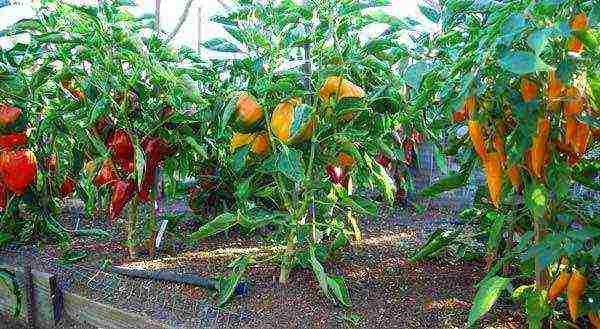 Bell peppers, or sweet peppers, are a favorite crop to grow in various countries. It has been actively cultivated for about 60 years. The best option for a plant is planting in greenhouses. At the moment, there are various varieties of bell peppers. They all have their own characteristics and requirements for care.
Bell peppers, or sweet peppers, are a favorite crop to grow in various countries. It has been actively cultivated for about 60 years. The best option for a plant is planting in greenhouses. At the moment, there are various varieties of bell peppers. They all have their own characteristics and requirements for care.
General information
Not all sweet peppers are suitable for greenhouses. An excellent option is the choice of types such as "Orange miracle", "Tenderness" or "Night". The fact is that they were specially bred for planting in greenhouses. Varieties differ in good yield Victoria, Othello, Elephant... However, they require special climatic conditions.
What varieties of pepper to plant in open ground and a greenhouse (video)
When purchasing varieties for greenhouses, it is necessary to carefully study the conditions for growing plants. They are indicated on the label:
- features of watering;
- ripening temperature;
- growing period.
If you put foreign seed in a polycarbonate building, there is no guarantee that it will sprout. The best time to plant is March. Use boxes with fertile soil, and leave a distance of at least 2 centimeters between the seeds. The seeds are covered with dry compost and the box is covered with paper. New shoots of pepper will germinate after a couple of weeks.
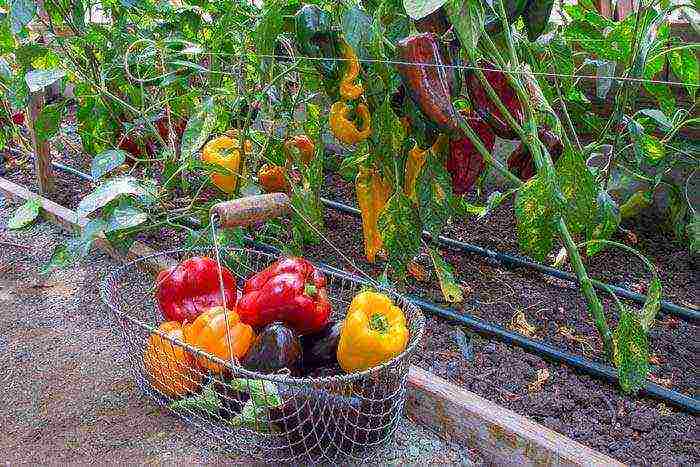
New plants appear actively at a temperature of about 21 degrees. After the seedlings grow up, a pick is carried out. In this case, the temperature in the greenhouse should be about 18 degrees. If the conditions for growing peppers are optimal, the seedlings grow quickly and have succulent green leaves.
After the height of the pepper reaches 15 centimeters, the apical buds are cut off. As a result, side branches are formed and a bush is obtained. The more lateral processes there are, the more fruits will be obtained from the plant.
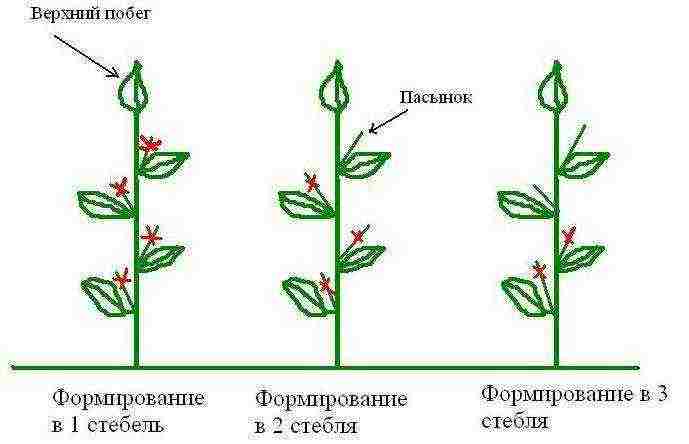
Types of varieties
Consider the most productive varieties grown in a greenhouse.
| Variety name | Maturation and features of the bush | Fruit | Peculiarities |
| "Cardinal" | Early hybrid, bush height - up to 1 m | Juicy, large, fleshy, purple color | For greenhouses only |
| "Claudio" | Early ripe, branched bush, up to 130 cm in height | Dark red, large, weighing up to 250 grams, elongated shape | Differs in disease resistance |
| Atlant | Early ripe, bush height up to 80 cm | Large, with juicy pulp, thick-walled, red | Highly productive option |
| "Cockatoo" | Early variety, bush height up to 1.5 m | Fruits are elongated, red | Large fruits - up to 500 grams |
| "Hercules" | Mid-season | Cuboid, ribbed, weight up to 300 grams | Shelf life and excellent disease resistance |
| "Denis" | Stunted, early | Large and fleshy, elongated | Can be grown in a film greenhouse |
| "Latinos" | Medium-tall, maturing up to 110 days | Cuboid, red, fleshy | High yield: from a bush - up to 14 kg of fruits |
| "Orange miracle" | Early ripe, bush up to 110 cm high | Cuboid, bright orange | Resistant to tobacco mosaic virus |
| "Tenderness" | Medium early, bush up to 80 cm high, semi-spreading | Elongated pyramidal, light green or red | Yield per plant up to 1.9 kg |
| "Victoria" | Medium early variety, bush up to 50 cm high | Conical, drooping, red | Resistant to verticillary wilt |
| "Elephant" | Early ripe, bush 80 cm high | Large, in the form of a triangular prism, red | Top rot resistant |
We also invite you to learn about the basic rules and methods for watering greenhouse peppers.
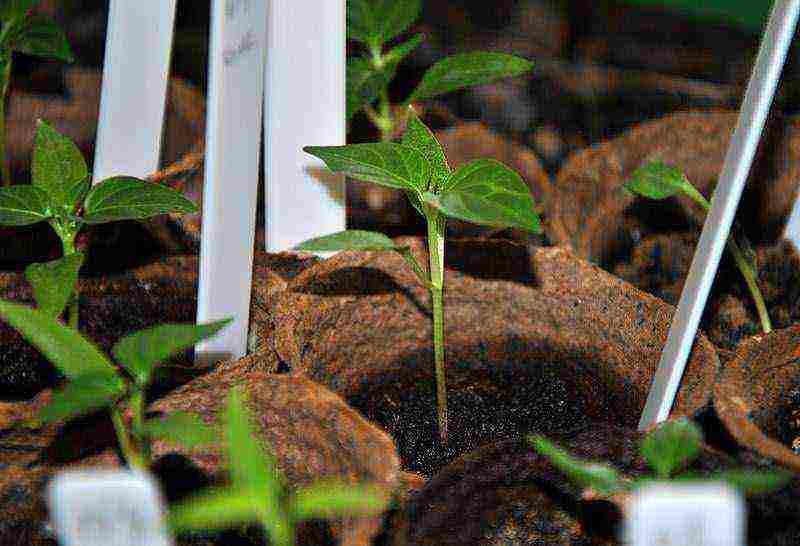
Description of varieties
Let's consider the best and new types of peppers in more detail.
- Pepper "Claudio" for greenhouses is a highly productive hybrid. Its fruits begin to ripen already on the 72nd day after planting. Moreover, they have high taste characteristics. The plant is capable of simultaneously forming up to 12 peppers weighing about 230 grams. The fruits are not afraid of the sun's rays, are well transported, and are resistant to viral diseases.
- Atlant... For this sweet pepper, it is characteristic that the bush looks very modest. It is not very sprawling and is of medium size. Leaves are few when compared with other species. But the fruits are very large, fleshy, conical, crunchy. They taste sweet and juicy.
- "Cockatoo"... This variety is characterized by the fact that the fruits grow up to 30 centimeters in length. At the same time, their weight reaches 500 grams. Red pepper, cylindrical, fruit walls are thick and fleshy. The yield from one bush is up to 3 kilograms, the plant height reaches one and a half meters.
- "Hercules". Pepper has excellent taste. Suitable for greenhouse. The period from planting to the beginning of fruiting is 90 days. The fruits have a cuboid shape, their width is 10 centimeters, their length is 12 centimeters, and the wall thickness is 6 millimeters. Fruit color is from green to red. The vegetable is characterized by resistance to the tobacco mosaic virus. Peppers can be used both for canning and for fresh consumption.
- "Denis"... Great for growing in polycarbonate buildings. The fruits are large. It takes about 90 days from germination to ripening. The plant reaches a height of 70 centimeters. The fruits are dark red, elongated, can reach a size of 18 by 10 centimeters, weigh up to 400 grams, wall thickness up to 9 millimeters. Pepper is resistant to tobacco mosaic.
- "Orange miracle". For a sweet vegetable of this variety, it is characteristic that it is grown in seedlings. Seedlings are sown in early March. Seedlings appear after 15 days. In a polycarbonate greenhouse where the plant is cultivated, a temperature of 24 degrees must be maintained. After the formation of the first two true leaves, a pick is made. A bountiful harvest of the variety is observed on well-drained and loamy soils.Watering is recommended in the evening. Top dressing and loosening are required.

Features of planting and care
For polycarbonate greenhouses, transplanting seedlings should be carried out at the "age" of 50 days. Plants are planted at intervals of 40 centimeters from each other. In this case, a distance of 70 centimeters should remain between the rows. Organic fertilizers should be applied to the soil before planting - 4 kilograms per square meter. Mineral fertilizers are also needed. Pepper is planted in a polycarbonate building from cups along with a lump of soil in which it grew. This way the plant will not have the stress of replanting. Then abundant watering is carried out.
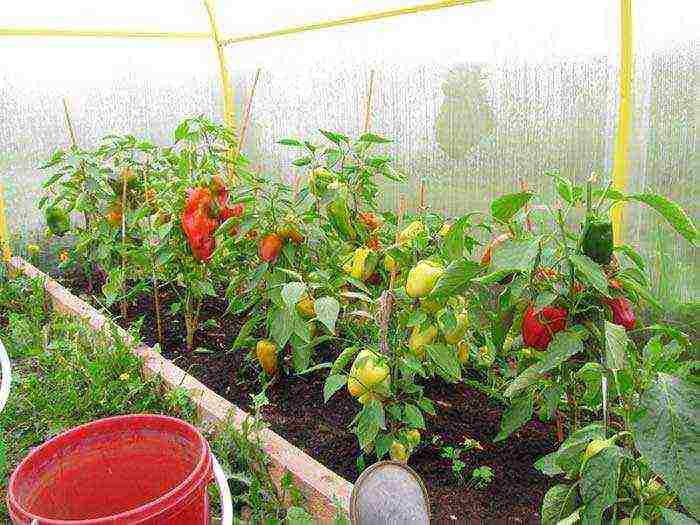
Care after landing
Watering a sweet vegetable is carried out once a week. In this case, the water for the soil of the greenhouses must be warm. You can combine watering with top dressing. Pepper needs loose earth. If the soil is not mulched, a crust may form.
All varieties of plants, no matter if they are tested or new, require aeration of the greenhouses. If the temperature in the building rises above +30 degrees, the pollen loses its quality. High-quality crop rotation and competent agricultural technology will help to avoid diseases.
Tips for growing bell peppers in a greenhouse (video)
The best varieties of crops are those that give a large yield of sweet-tasting fruits, and the requirements for light, soil and moisture are minimal. To get a good harvest, you need to properly care for the plants even at the planting stage and fertilize with fertilizers. Only competent observance of all the rules makes it possible to obtain high-quality and tasty vegetables in a polycarbonate building.
In order not to lose the material, be sure to save it to your social network by simply clicking on the button below:
Attention, only TODAY!
Reviews and comments
Vegetable or sweet pepper is a high-yielding and healthy crop loved by many. Many summer residents prefer to grow pepper. But the yield is higher for those who cultivate pepper in the greenhouse. One of the important parameters when growing is the correct choice of seeds. For greenhouse peppers, you need to select seeds that are intended for planting in a greenhouse.
The best varieties of peppers for polycarbonate greenhouses
How to choose the right variety
There are several criteria for choosing a litter. When buying seeds in a store, your eyes run up from the abundance of bags with alluring pictures. The main thing here is not to get confused and ask the seller the right questions. You can even put together a cheat sheet for you to look into.
- Growing conditions. The size of your greenhouse. Acquire tall or undersized varieties.
- Ripening terms. Which variety do you prefer - early, middle, late, or all three. If you are a big fan of a vegetable, it makes sense to plant seeds of different varieties so that it remains on your table for longer.
- Disease resistance. There are probably diseases that peppers are most susceptible to in your area. Choose varieties with increased resistance to these diseases. The same goes for pests.
The height of the pepper bush must match the height of the greenhouse
By the way! Some late-ripening varieties can be dug up, planted in large pots and continued to grow at home during autumn harvesting of the greenhouse. They can extend fruiting until midwinter.
Terms and region
The amount of light. Here you need to be careful, since each variety differs in the need for light energy and, in the absence of its required amount, the expected yield may not be given. If the greenhouse is with supplementary lighting, you can ignore this parameter.
Regional affiliation. A very important parameter. Even in the best greenhouse, you cannot grow varieties that are not zoned for your region. Buy locally-bred seeds. It is better to purchase seed from a nearby seed farm.
Buy locally bred seeds
Hybrid or variety
Hybrids or not.This parameter will be important for you if you want to collect the seeds of the grown peppers for the next year. If the plant is varietal, everything is in order. If it is a hybrid (indicated by the F1 marking on the package) it is useless to collect seeds from it, varietal characteristics in hybrids are not transmitted to the next generations. The bad thing about the hybrid is that every year you will have to buy its seeds again. The good thing about the hybrid is that, as a rule, it is zoned, high-yielding and characterized by increased resistance to diseases.
The hybrid is indicated by the F1 marking on the packaging
Color, size and shape
Fruit shape and pulp quality. Today in the selection there are such different forms of peppers that the choice is almost unlimited. Elongated cones, prisms, pyramids, circles, ellipses, ribbed boxes, cubes, thin sticks. In addition, fruits can be smooth or lumpy, thick-walled or thin-cored, with firm or soft flesh. All descriptions are on the packages, but you can first ask the seller about the desired parameters so that he, from the varietal variety, at least picks up the necessary minimum for you.
Fruit color. Some people prefer the classic red. Someone wants to see a traffic light in the greenhouse. Many are attracted by the cheerful orange pepper. Some people like it when the fruit, even when fully ripe, remains dark green. And there are fans of purple and brown peppers. Take a closer look at the pictures and read the description of the type on the package.
A variety of peppers in shape and color
By the way! It is also worth paying attention to the need to form a bush. Is it necessary to remove side shoots and leaves. The keeping quality parameter is also not the last in importance. The variety is stored for a long time after harvest or should be eaten fresh. Is the variety suitable for conservation?
Description of popular greenhouse varieties
| Atlant | This variety is best suited for small polycarbonate greenhouses. It grows in height by 80 centimeters during the growing season. Fruit ripening rate - 110 days after germination. It is considered an early maturing and highly productive variety. The fruits of "Atlanta" are rather large, weighing more than 100 g, their flesh is juicy, but in a thick layer. The taste is excellent, classic. Color in technical ripeness - green, in consumer - deep red | |
| "Alyonushka" | The cultivar is a hybrid. It is considered one of the best in the mid-early line. Vegetation lasts 120-130 days. The height of the bush is 90-100 cm.The fruits have a pyramidal shape and an average weight of 90-115 g. At the beginning of ripening they have a pale green color, in the middle they are dark green, by the end of the full ripening period they acquire an intense red color | |
| "Prince Silver" | Has an early ripening period - up to 120 days. The bushes are low - up to 70 cm. The form is compact, holds well. It bears fruits - cones, which are smooth-walled. The pulp is soft. Many people harvest this pepper at the stage of technical ripeness, because during this period its fruits are yellow. Later they turn red. Thick walls, average fruit weight - 95 g. This variety is especially resistant to diseases | |
| "Orange miracle" | Ultra early maturing. It is removed already on the 90th day. The color of the fruit in the ripeness of a technical dazzling lemon color, later acquires a rich orange color. The mass is more than average - up to 150 g. The bush is 120 cm high. The pulp is not very soft, dense. Quite thick rind | |
| "Hercules" | This variety is very interesting. Average ripeness - comes after 120 days. The bush is standard, compact, height 60 cm. The cubic-shaped, hard-walled fruits grow up to 200 g. On average, about 140. The walls are thin. The color is classic tart red. Increased resistance to infections | |
| "California miracle" | This bright scarlet variety with prismatic vegetables is known to many summer residents. It is popular for its excellent keeping quality. It is grown according to tradition, although the variety is not very suitable for our region - it has been bred for Moldova.But later adapted varieties can be sown in the greenhouse. | |
| "Arsenal" | A mid-season variety with a compact bush (height up to 70 cm) and high yield. Pepper with drooping cones, the mass can grow up to 120 g. At the stage of technical maturation - soft green. In consumer ripeness of a dull red hue | |
| "Buratino" | A variety that ripens quickly in greenhouse conditions - only up to 100 days. The fruit is cone-shaped, but elongated, with a hint of a long curious nose of the famous fairy-tale character. The color is red, but not bright. Fruit weight - 150 g. Bush 80-100 cm high. | |
| "Golden Tamara" | A variety with fruits of an unusual shape, resembling tomatoes from a distance. Very large record-breaking fruits - up to 200 g in weight. Meaty and sweet, juicy and delicious. Walls of unprecedented thickness - up to 9 mm. It grows in a bush of 90 cm. This variety is early maturing, but it is fashionable to preserve it and keep it well for quite a long time. Differs in resistance to viruses | |
| "Martin" | The variety is mid-season. Taste characteristics are high. The fruit is red, with a cone. Ripens on the 120th day. "Swallow" has a high bush - up to 120 cm. Fruits for this size of a bush are small - about 140-160 g. But there are many fruits, and the variety is resistant to diseases | |
| "Cardinal" | Hybrid. Reaches over a meter. It is late maturing. Gives juicy large, up to 180 g, fruits, which by the end of the ripening period acquire an intense purple color, reminiscent of eggplant | |
| "Winnie the Pooh" | Popular, early variety. Ripens up to one hundred days. The fruits are shortened cones. The color is yellow-red. The fruit weighs 170 g. Used fresh. It has a thin, delicate skin and loose flesh. The bush grows up to 65 cm. | |
| "Claudio" | A selection variety from the Dutch. Late ripening - maturation of 120-135 days. The fruits are super large - 250 g or more. The color is brownish red. The shape is classic, slightly shortened cone. The bush is very powerful, like a shrub, it grows up to 130 cm. It is well kept. Resistant to most diseases |
Whichever variety of pepper you choose. The next important component of a good harvest is proper care. Pepper is not a capricious plant, but a demanding one. First you need to grow seedlings. Then, in due time, plant her in the greenhouse. Peppers need high humidity, stable heat and nutritious feeding. Then the harvest will not pass you by.
Video - What varieties of bell peppers to plant in open ground and in a greenhouse
Video - How to choose the right variety of pepper
Video - Sowing pepper seeds for seedlings
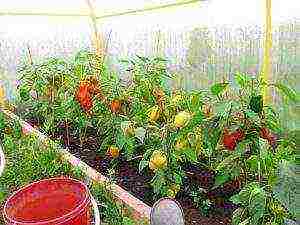 The homeland of sweet pepper is considered to be South America, the climate of which has its own unique specifics. This is the reason for certain difficulties with the implementation of agricultural engineering measures, caring for a warm, light-loving culture in our latitudes. Gardeners have learned to cope with difficulties, as they have long adapted to growing bell peppers in greenhouse conditions.
The homeland of sweet pepper is considered to be South America, the climate of which has its own unique specifics. This is the reason for certain difficulties with the implementation of agricultural engineering measures, caring for a warm, light-loving culture in our latitudes. Gardeners have learned to cope with difficulties, as they have long adapted to growing bell peppers in greenhouse conditions.
The modern market provides homeowners with the opportunity to purchase effective materials for the construction of functional greenhouses, ideal for planting, growing, and fruiting sweet peppers. In particular, the popularity of greenhouse construction using sheet polycarbonate (translucent plastic) is growing.
What are the benefits of growing peppers in a polycarbonate greenhouse?
Polycarbonate is lightweight, easy to install, highly reliable, inexpensive, due to which many gardeners prefer the construction of greenhouses from it.
Pepper growing in a polycarbonate greenhouse shows good growth and fruiting results, since this material does an excellent job of keeping heat inside the greenhouse. High-quality polycarbonate has a sufficient degree of transparency, due to which it provides the necessary illumination for plants.
Thanks to the unique properties of translucent plastic, in a greenhouse built from it, it is possible to create an optimal microclimate, ideal for capricious peppers.
 A polycarbonate greenhouse is a fairly capital structure, inside which the gardener can easily equip the lighting of the pepper bushes, and, if necessary, darken the planting area using special curtains and nets.
A polycarbonate greenhouse is a fairly capital structure, inside which the gardener can easily equip the lighting of the pepper bushes, and, if necessary, darken the planting area using special curtains and nets.
In greenhouses of this kind, it is possible to install appropriate heating equipment, which makes it possible to achieve fruiting of planted crops throughout the year. Experienced summer residents practice the arrangement of effective ventilation systems in order to adjust the humidity and temperature conditions inside the greenhouse.
The best varieties of peppers for a polycarbonate greenhouse
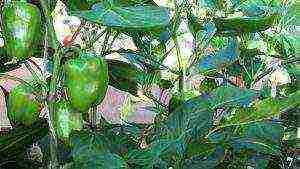 Experience shows that if a gardener fails to choose the best varieties of peppers for a polycarbonate greenhouse, the presence of a convenient, reliable greenhouse is unlikely to guarantee a large number of high quality fruits.
Experience shows that if a gardener fails to choose the best varieties of peppers for a polycarbonate greenhouse, the presence of a convenient, reliable greenhouse is unlikely to guarantee a large number of high quality fruits.
In order to count on good yields and not face intractable problems related to growing pepper, it is advisable to purchase the most suitable crop seeds, adapted to growing conditions in greenhouses. Below is an overview of the optimal varieties, hybrids, showing excellent yields in greenhouses made of translucent plastic.
Gourmet
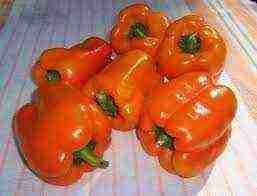 The high-yielding Gourmet pepper is suitable for growing in greenhouses. Strong varietal bushes in growth reach a height of about 1 m. The color of large fruits growing on them, as they ripen, changes from dark green to rich orange. Fragrant, tasty fruits of Gourmet pepper have a prismatic shape, thick walls, 3 - 4 chambers, weight 80 - 120 gr. The culture is characterized by resistance to tobacco mosaic.
The high-yielding Gourmet pepper is suitable for growing in greenhouses. Strong varietal bushes in growth reach a height of about 1 m. The color of large fruits growing on them, as they ripen, changes from dark green to rich orange. Fragrant, tasty fruits of Gourmet pepper have a prismatic shape, thick walls, 3 - 4 chambers, weight 80 - 120 gr. The culture is characterized by resistance to tobacco mosaic.
Indalo F1
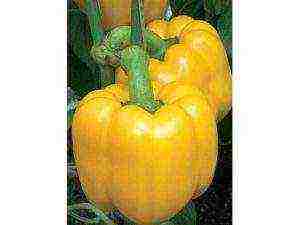 The mid-early Indalo F1 pepper, which takes 110 - 120 days to ripen, is a tall plant 110 - 120 cm in height. The large fruits of the hybrid have a cuboid shape, a beautiful bright yellow color, weighing 280 - 300 grams. Indicators of fruit wall thickness reach 10 mm. In greenhouse conditions, Indalo F1 pepper demonstrates a yield in the range of 7 - 14 kg / sq.
The mid-early Indalo F1 pepper, which takes 110 - 120 days to ripen, is a tall plant 110 - 120 cm in height. The large fruits of the hybrid have a cuboid shape, a beautiful bright yellow color, weighing 280 - 300 grams. Indicators of fruit wall thickness reach 10 mm. In greenhouse conditions, Indalo F1 pepper demonstrates a yield in the range of 7 - 14 kg / sq.
Paris F1
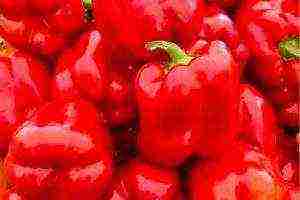 Favorable reviews of the Paris F1 pepper given by gardeners are simply explained. A mid-late hybrid, planted in a greenhouse, bears fruit in 130 - 136 days. Its bushes are medium-sized (80 cm tall), compact. Cuboid-shaped red fruits weigh 120 - 130 grams, have thick walls (up to 8 mm), tender, juicy pulp. One bush can collect 1.7 - 2 kg of vegetables.
Favorable reviews of the Paris F1 pepper given by gardeners are simply explained. A mid-late hybrid, planted in a greenhouse, bears fruit in 130 - 136 days. Its bushes are medium-sized (80 cm tall), compact. Cuboid-shaped red fruits weigh 120 - 130 grams, have thick walls (up to 8 mm), tender, juicy pulp. One bush can collect 1.7 - 2 kg of vegetables.
Pride of Russia
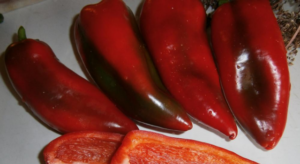 Early ripe pepper Pride of Russia gives high yields in greenhouse conditions. The culture will delight the gardener with continuous, abundant fruiting, solid productivity (up to 15 kg / sq. M). Pepper bushes are low (up to 50 cm), about 20 large prism-shaped fruits are tied on them, weighing about 130 grams, with walls 7 mm thick. The light green color of technically mature fruits, as they ripen, is replaced by a deep red.
Early ripe pepper Pride of Russia gives high yields in greenhouse conditions. The culture will delight the gardener with continuous, abundant fruiting, solid productivity (up to 15 kg / sq. M). Pepper bushes are low (up to 50 cm), about 20 large prism-shaped fruits are tied on them, weighing about 130 grams, with walls 7 mm thick. The light green color of technically mature fruits, as they ripen, is replaced by a deep red.
Capia
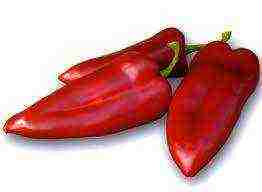 In the greenhouse, it is worth planting Kapia pepper, the ripening time of which is medium. The bushes of the culture are semi-sprawling, in growth they reach an average height, are covered with semi-plump, conical, glossy fruits with 2-3 nests. The weight of ripe red fruits of the plant is 60 g, their walls are 4 mm thick. 1.64 kg of vegetables can be harvested from 1 square meter of greenhouse space.
In the greenhouse, it is worth planting Kapia pepper, the ripening time of which is medium. The bushes of the culture are semi-sprawling, in growth they reach an average height, are covered with semi-plump, conical, glossy fruits with 2-3 nests. The weight of ripe red fruits of the plant is 60 g, their walls are 4 mm thick. 1.64 kg of vegetables can be harvested from 1 square meter of greenhouse space.
Ekaterina
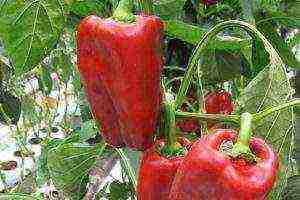 Large-fruited, medium early Ekaterina pepper belongs to tall varieties. Fruits in the process of ripening acquire a cylindrical shape, change color from green to red. Fruit weight indicators reach values of 150 - 210 g, wall thickness is 6.7 - 7 mm. Varietal fruits are valued among gourmets for their juicy, sweet, tender pulp, and the presence of a pleasant aroma.
Large-fruited, medium early Ekaterina pepper belongs to tall varieties. Fruits in the process of ripening acquire a cylindrical shape, change color from green to red. Fruit weight indicators reach values of 150 - 210 g, wall thickness is 6.7 - 7 mm. Varietal fruits are valued among gourmets for their juicy, sweet, tender pulp, and the presence of a pleasant aroma.
Agapovsky
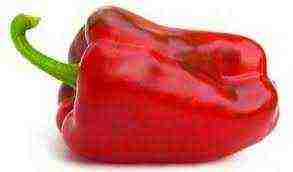 Early ripe Agapovsky pepper is a compact, medium-sized plant with a drooping direction of fruit growth. Varietal fruits are large in size, prismatic, slightly ribbed, smooth surface. Fruit weight is 114 - 120 g, walls are up to 9 mm thick. The culture is impressive in its resistance to tobacco mosaic, and the top rot affects the plant only slightly.
Early ripe Agapovsky pepper is a compact, medium-sized plant with a drooping direction of fruit growth. Varietal fruits are large in size, prismatic, slightly ribbed, smooth surface. Fruit weight is 114 - 120 g, walls are up to 9 mm thick. The culture is impressive in its resistance to tobacco mosaic, and the top rot affects the plant only slightly.
Buffalo horn
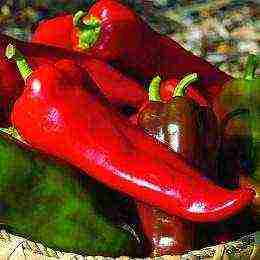 Mid-early peppers Buffalo horn demonstrates excellent productivity in greenhouses (up to 8.2 kg / sq. M). The variety is valuable due to the piquant combination of flavors: sweet walls and sharp inner partitions. The bushes of the culture are spreading, reaching a height of up to 60 cm. The dark red ripe fruits have an elongated conical shape, are up to 22 cm long, weighing 120 - 140 g.
Mid-early peppers Buffalo horn demonstrates excellent productivity in greenhouses (up to 8.2 kg / sq. M). The variety is valuable due to the piquant combination of flavors: sweet walls and sharp inner partitions. The bushes of the culture are spreading, reaching a height of up to 60 cm. The dark red ripe fruits have an elongated conical shape, are up to 22 cm long, weighing 120 - 140 g.
Purple Haze
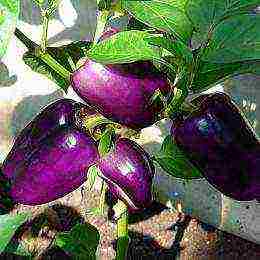 Praise for the Lilac Mist pepper grown indoors can be heard quite often from gardeners. The yield of the mid-early variety is 4.2 - 6.8 kg / sq. The bushes of the plant are semi-stemmed, vigorous, semi-spreading, with drooping fruits. For ripe fruits, a cuboid shape is characteristic, possessing a glossy, smooth surface. A distinctive feature of the variety is the presence of a beautiful lilac color at the stage of technical ripeness, which, as it matures, is replaced by red.
Praise for the Lilac Mist pepper grown indoors can be heard quite often from gardeners. The yield of the mid-early variety is 4.2 - 6.8 kg / sq. The bushes of the plant are semi-stemmed, vigorous, semi-spreading, with drooping fruits. For ripe fruits, a cuboid shape is characteristic, possessing a glossy, smooth surface. A distinctive feature of the variety is the presence of a beautiful lilac color at the stage of technical ripeness, which, as it matures, is replaced by red.
Mastodon
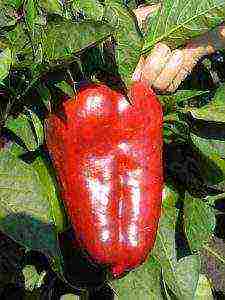 Early ripe Mastodon pepper is suitable for growing in a heated or unheated greenhouse. The stable yield of the variety is 7.2 kg / sq. The culture is resistant to tobacco mosaic. The bushes of the plant are semi-determinate, spreading, sparse, medium-sized, reaching a height of 140 - 250 cm, depending on growing conditions. The mass of red fruits is 200 - 270 gr.
Early ripe Mastodon pepper is suitable for growing in a heated or unheated greenhouse. The stable yield of the variety is 7.2 kg / sq. The culture is resistant to tobacco mosaic. The bushes of the plant are semi-determinate, spreading, sparse, medium-sized, reaching a height of 140 - 250 cm, depending on growing conditions. The mass of red fruits is 200 - 270 gr.
Latino F1
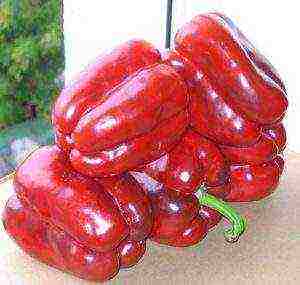 The early ripe Latino F1 pepper, provided with proper care, is capable of producing a yield of 16 kg from 1 square meter of greenhouse space. The fruits have a cuboid shape, thick walls (1 cm), 12 x 12 cm in size, bright red in color. The culture is characterized by resistance to tobacco mosaic contamination.
The early ripe Latino F1 pepper, provided with proper care, is capable of producing a yield of 16 kg from 1 square meter of greenhouse space. The fruits have a cuboid shape, thick walls (1 cm), 12 x 12 cm in size, bright red in color. The culture is characterized by resistance to tobacco mosaic contamination.
Health
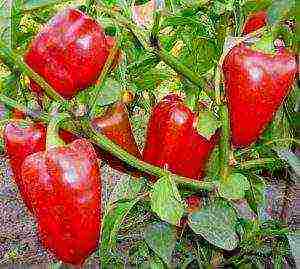 Studying the description of the Health pepper, it is worth noting that the culture has the ability to form fruit ovaries even in greenhouses with insufficient lighting. This variety is considered early maturing. Bushes grow tall (up to 170 cm), semi-spreading. They form drooping, prismatic fruits. Ripe fruits of the culture are red, weigh 33 - 41 grams, have a diameter of up to 6.4 cm, a length of up to 12 cm.
Studying the description of the Health pepper, it is worth noting that the culture has the ability to form fruit ovaries even in greenhouses with insufficient lighting. This variety is considered early maturing. Bushes grow tall (up to 170 cm), semi-spreading. They form drooping, prismatic fruits. Ripe fruits of the culture are red, weigh 33 - 41 grams, have a diameter of up to 6.4 cm, a length of up to 12 cm.
Othello
 Ripening in the early stages, Othello pepper is a semi-sprawling, compact plant (up to 80 cm high) with a mixed arrangement of fruits. Varietal fruits are large, fleshy, conical, smooth, with 2 - 3 nests. The original color of the fruit of the Othello variety is purple in technical maturity, in biological it turns brown. Ripe fruits weigh up to 120 grams, their walls are 7 mm thick.
Ripening in the early stages, Othello pepper is a semi-sprawling, compact plant (up to 80 cm high) with a mixed arrangement of fruits. Varietal fruits are large, fleshy, conical, smooth, with 2 - 3 nests. The original color of the fruit of the Othello variety is purple in technical maturity, in biological it turns brown. Ripe fruits weigh up to 120 grams, their walls are 7 mm thick.
Bella Vista
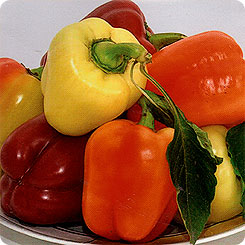 Bella Vista medium early pepper is resistant to verticillium. Its yield in greenhouse conditions is 8 - 9 kg / sq. M. The variety tolerates heat well. The bushes of the culture are semi-stemmed, in growth they reach a height of 65 cm. The direction of growth of fruits is semi-deadly. Technically, ripe fruits acquire a light green color, turn red as they fully ripen, have a mass of up to 150 grams, walls 8 mm thick.
Bella Vista medium early pepper is resistant to verticillium. Its yield in greenhouse conditions is 8 - 9 kg / sq. M. The variety tolerates heat well. The bushes of the culture are semi-stemmed, in growth they reach a height of 65 cm. The direction of growth of fruits is semi-deadly. Technically, ripe fruits acquire a light green color, turn red as they fully ripen, have a mass of up to 150 grams, walls 8 mm thick.
Rostov anniversary
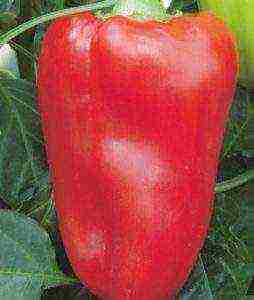 Description Rostov jubilee pepper has the following: a semi-sprawling plant with an average maturity of fruits. The drooping fruits of the culture have a conical shape, glossy, medium-silvery surface, yellowish color (technical ripeness), changing to red (biological ripeness). The variety demonstrates resistance to Alternaria, Fusarium. The fruits of the culture lend themselves well to storage, transportation.
Description Rostov jubilee pepper has the following: a semi-sprawling plant with an average maturity of fruits. The drooping fruits of the culture have a conical shape, glossy, medium-silvery surface, yellowish color (technical ripeness), changing to red (biological ripeness). The variety demonstrates resistance to Alternaria, Fusarium. The fruits of the culture lend themselves well to storage, transportation.
Sarno
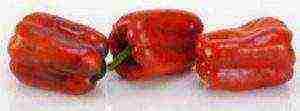 The virus-resistant Sarno pepper will delight the gardener with a good harvest. The variety is suitable for growing in unheated greenhouses. For varietal fruits, average ripening times are characteristic. Ripe fruits have an elongated cuboid shape, red color, weighing 400 - 450 g, up to 14 cm long, up to 9 cm in diameter. Sarno pepper is suitable for universal use.
The virus-resistant Sarno pepper will delight the gardener with a good harvest. The variety is suitable for growing in unheated greenhouses. For varietal fruits, average ripening times are characteristic. Ripe fruits have an elongated cuboid shape, red color, weighing 400 - 450 g, up to 14 cm long, up to 9 cm in diameter. Sarno pepper is suitable for universal use.
Bandai F1
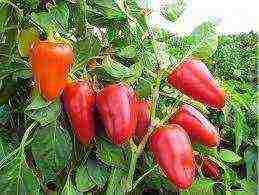 Hybrid pepper Bandai F1 demonstrates high yield rates, resistance to common diseases (spotted wilting, tobacco mosaic). The bushes of the plant are of medium vigor, large cuboid fruits ripen on them, weighing 350 - 400 g, 11 - 13 cm long, up to 11 cm in diameter. The ripening time of fruits is average. Delicious, sweet pepper Bandai F1 is perfectly preserved, transported over long distances.
Hybrid pepper Bandai F1 demonstrates high yield rates, resistance to common diseases (spotted wilting, tobacco mosaic). The bushes of the plant are of medium vigor, large cuboid fruits ripen on them, weighing 350 - 400 g, 11 - 13 cm long, up to 11 cm in diameter. The ripening time of fruits is average. Delicious, sweet pepper Bandai F1 is perfectly preserved, transported over long distances.
Jubilee Semko
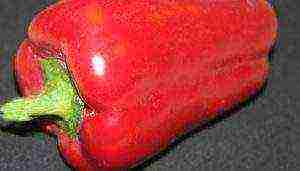 Giving feedback on the Jubilee Semko pepper, gardeners focus on the good yield indicators of the hybrid (8 - 10 sq / sq.m) grown in greenhouse conditions. Early ripe varietal pepper will delight you with abundant, long-term fruiting. The bushes of the plant are medium-sized (up to 60 cm high), compact, standard. The shape of ripe fruits is truncated-pyramidal, red color, weight up to 150 gr. The plant is tolerant to verticillium, tobacco mosaic.
Giving feedback on the Jubilee Semko pepper, gardeners focus on the good yield indicators of the hybrid (8 - 10 sq / sq.m) grown in greenhouse conditions. Early ripe varietal pepper will delight you with abundant, long-term fruiting. The bushes of the plant are medium-sized (up to 60 cm high), compact, standard. The shape of ripe fruits is truncated-pyramidal, red color, weight up to 150 gr. The plant is tolerant to verticillium, tobacco mosaic.
Stanley F1
The mid-early Stanley F1 pepper is in demand due to its good taste, marketability, and disease resistance. The height of the bushes of the culture is 100 - 130 cm. The juicy cuboid fruits weigh about 250 grams. and have a dark red color. The positive reviews about Stanley F1 pepper are well deserved, since the culture is characterized by abundant fruiting. The yield indicators of the hybrid are 2.3 sq / sq.
Features of caring for peppers grown in a polycarbonate greenhouse
In order to guarantee excellent yields of delicious peppers with impeccable commercial qualities, you will need to adhere to certain rules regarding the care of the crop grown in a polycarbonate greenhouse.
The gardener will need to control any temperature fluctuations inside the greenhouse. Ignoring this advice can negatively affect the quality of the crop due to growth retardation, poor plant development.
Pepper bushes need regular watering, loosening the soil. Insufficient watering can cause brown spots on the foliage. Due to loosening, the root system is enriched with oxygen, moisture is available to it.
Competent control of the degree of illumination will be the key to getting bushes with bright green leaves, large fruits. If the culture of sunlight is not enough, it makes sense to equip additional artificial light sources in the greenhouse.
T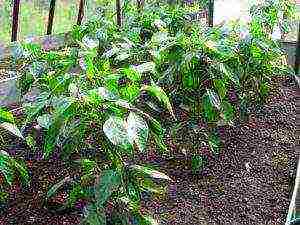 Bell peppers need periodic feeding with high-quality fertilizers (organic, mineral). This will have a beneficial effect on the growth of bushes, accelerate the formation, ripening of fruits.
Bell peppers need periodic feeding with high-quality fertilizers (organic, mineral). This will have a beneficial effect on the growth of bushes, accelerate the formation, ripening of fruits.
By planting good varieties of bell peppers in a polycarbonate greenhouse, providing proper care for the plants, you can count on getting a significant harvest. Tasty, juicy, healthy peppers will certainly be praised by households and guests, and neighbors will learn from the experience of growing greenhouse vegetables from a successful gardener.
